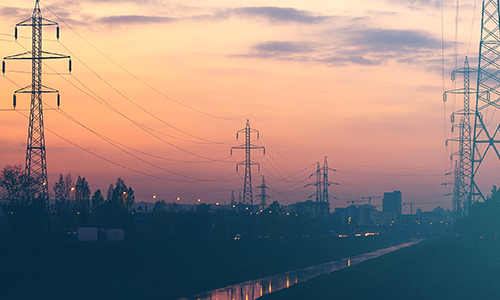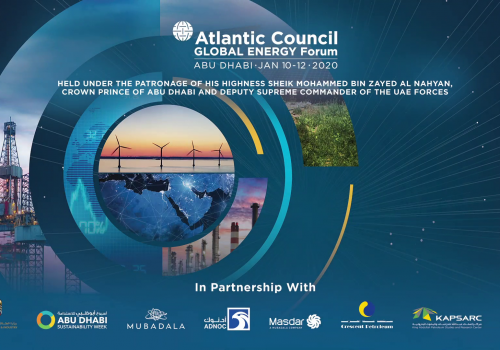European energy diversification: How alternative sources, routes, and clean technologies can bolster energy security and decarbonization
This issue brief was informed by discussions at an Atlantic Council Global Energy Center roundtable on European energy security in Berlin on October 9, 2019, as well as other conversations with government officials, private sector executives, and leading academics in the global energy sector. The information in this issue brief will not be attributed to any specific individual since the discussions took place under the Chatham House Rule. This is the second issue brief in a series; it complements the findings in the first issue brief, “European Energy Security and Transatlantic Cooperation: A Current Assessment,” which covered the current state of the European Union’s regulatory environment and energy markets with a specific focus on energy security and natural gas markets.
Introduction
The European Union’s efforts to achieve a carbon-neutral economy present a unique and timely opportunity to strengthen European energy security. European Commission President Ursula von der Leyen recently proposed a “European Green Deal,”—Europe’s new growth strategy, which seeks to transform the European Union (EU) into a climate-neutral economy by 2050. This objective builds on the commitments made by the EU under the Paris Agreement to reduce greenhouse gas emissions by at least 40 percent by 2030 compared to 1990. The European Commission plans to enshrine the 2050 climate neutrality objective into law in March 2020. The European Council endorsed the Green Deal objectives, despite opposition from Poland. The discussions are set to continue in June 2020. According to the objective of the “European Green Deal,” carbon emissions would have to be reduced by at least 50 percent by 2030 compared to 1990 levels. However, the European Environment Agency said that, without additional measures, the EU would likely miss its 2030 target for reducing greenhouse gas emissions. Current policies would reduce the EU’s emissions by 60 percent by 2050. New technologies, along with natural gas, will play a critical role in helping the EU reach this ambitious goal. Furthermore, the EU will use alternative gas sources, routes, and infrastructure to bolster European energy security. Clean energy sources will complement natural gas in European efforts to decarbonize and contribute to European energy security. This issue brief will evaluate the EU’s efforts to meet its decarbonization goals, address the role of natural gas in Europe’s low-carbon future, and explain the potential for new gas sources, alternative gas routes, and clean energy technologies to reduce carbon emissions, while simultaneously increasing European energy security and opportunities for transatlantic cooperation.
The EU’S decarbonization targets and energy security
The European Commission’s new decarbonization agenda has tremendous potential to strengthen energy security, but only if EU member states continue to prioritize energy security in their efforts to reduce carbon emissions. EU member states are expected to submit, by the end of 2019, national energy and climate plans outlining how they will implement the objectives of the 2030 Clean Energy Package, which seeks to cut CO2 emissions by 40 percent. Countries’ strategies for meeting the set climate targets and complying with the 2030 Clean Energy Package legislation will guide the roles of conventional and clean energy technologies in Europe. European energy security will be impacted by how EU member states choose to deploy those strategies.
The plans are expected to set out national contributions to the EU-wide climate neutrality target. The European Commission will assess the plans and if additional measures are required. The European Commission’s review of national plans will address decarbonization, energy security, and competitiveness objectives. It is an opportunity for improving energy security for national, regional, and transatlantic communities.
The sense of urgency to address climate change is widely shared across the EU. But, as exemplified by Poland’s opposition, not all member states are prepared, able, or willing to reach the target by 2050. While Luxembourg, the United Kingdom, Ireland, Greece, Denmark, and Belgium are ahead of the curve on carbon emission cuts, member states like Latvia, Estonia, Lithuania, Bulgaria, and Poland are starting from less diversified energy mixes, with predominantly heavier fossil fuel baselines and the legacies of monolithic suppliers.
Technology can aid the process of decarbonization, which will reduce reliance on fossil fuels and bolster energy security by eliminating dependence on sole suppliers. EU member states should consider technology-neutral and source-neutral approaches in order to meet the carbon reduction targets in a holistic manner. Such flexibility may optimize options for member states with varying degrees of energy needs, mixes, infrastructure, homegrown energy potential, and financial resources. Carbon reduction could be achieved through various methods and advanced technologies. All carbon reduction solutions should be properly recognized as they contribute to the end goal of carbon neutrality.
Natural gas will play a significant role in enhancing energy security
While the EU’s overall energy consumption is projected to stay relatively flat over the next three decades, the International Energy Agency (IEA) estimates that the EU’s electricity demand will increase between 12–26 percent by 2040. To meet this growing electricity demand, the EU will have to elevate the role of natural gas, clean energy, and advanced technologies. Although gas consumption is expected to remain flat, decreased European production of gas will lead to a need for greater imports.
Natural gas will advance energy reliability, accessibility, and affordability in Europe while contributing to the energy transition, particularly when natural gas displaces coal-fired power generation. However, several issues must be addressed to optimize the role of natural gas in the European market. These issues include gaps in strategic infrastructure, member state implementation of the regulatory framework, reducing methane emissions from the natural gas sector, societal attitudes towards fracking, and threats from geopolitical rivalries. Gaps and opportunities in regulatory implementation are covered in the first issue brief.
Natural gas can play a role in moving member states away from coal. Access to diversified supplies of natural gas bolsters European energy security by decreasing reliance on a dominant supplier. Similarly, low-carbon energy sources can enhance Europe’s efforts to decarbonize and simultaneously lessen dependence on Russian imports.
In the December 1, 2019, nomination letter to Kadri Simson, then commissioner-designate for energy, Von der Leyen noted: “Gas will have a role to play in the transition towards a carbon-neutral economy, notably through carbon capture and storage.” US exports of liquefied natural gas (LNG) to Europe, as well as other LNG supplies, will play a major role in helping the EU move away from coal. At her confirmation hearing, Simson noted her plans to examine how best to configure the natural gas regulatory framework and infrastructure for the decarbonized energy future. She also underscored the notion that “EU-US cooperation on LNG trade has been successful and it should be continued.” While significant coal and nuclear capacity will be phased out in the EU in the next decade, natural gas will play a critical role in the energy transition towards climate neutrality and ensuring baseload capacity in the EU’s energy mix. Competitive prices, global supply glut, and growing fungibility make natural gas significant for satisfying European energy demand and contributing to European energy security. In addition, growth in renewables and extreme weather will create greater demand for natural gas to satisfy baseload capacity with help from battery systems. According to the IEA, “nearly one-fifth of 2018’s energy demand growth stemmed from hotter summers and colder winters.”
The European Commission plans to examine how the natural gas regulatory framework and infrastructure can contribute to decarbonization. The European Green Deal proposal highlights the role of decarbonized gases, forward-looking competitive gas market design, and energy-related methane emissions.
According to the IEA’s World Energy Outlook 2019, although European natural gas absolute consumption is projected to fall from 617 billion cubic meters (bcm) in 2018 to between 380 and 557 bcm in 2040, natural gas is projected to gain market share.
Societal attitudes pose a challenge for the role of natural gas
The diversity of attitudes among EU member states towards the speed of decarbonization could pose both a challenge to European efforts to address carbon emissions as well as a risk to energy security.
Societal demand for urgent action on climate change, underscored by widespread protests, is growing against a backdrop of escalating global energy demand and booming populations. Public support will be essential for successful policy implementation. As noted in the IEA’s World Energy Outlook 2019, “the energy world is marked by a series of deep disparities.” The parts of the world that are experiencing major energy disparities are generally more concerned about their lack of access to energy than with the environmental impact of fossil fuels. Consumers’ sensitivity to increases in energy prices is at odds with societal pressure to curb carbon emissions. Globally, there is little consensus on how decarbonization should be funded and who should bear the burden. The European Commission has proposed a “Just Transition Mechanism” that aims to address social implications of decarbonization.
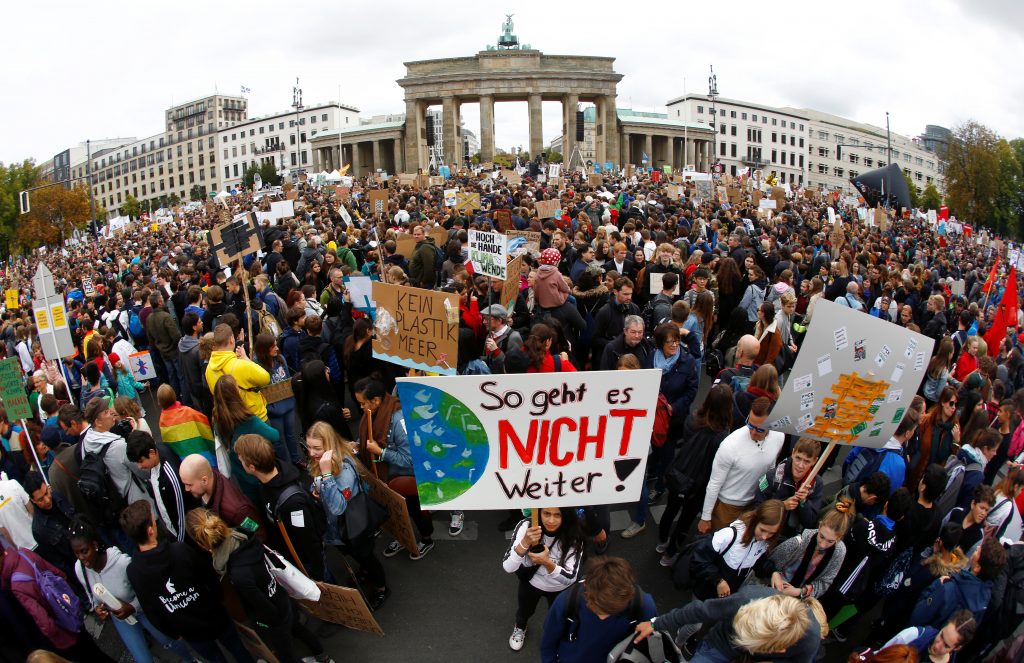
The role of natural gas in the EU’s energy transition is at the center of the societal debate. Some of the most substantial carbon emission reductions were achieved by switching from coal to gas, so natural gas has played a critical role in this transition. The trend continues as the United Kingdom, Spain, Italy, Germany, and the Netherlands ramp up the retirement of coal plants. (Germany and Spain lead in retired capacity.) Since gas projects have thirty- to forty-year life cycles, there is a narrative that new plants could run the risk of stunting renewable energy growth. Yet, future natural gas plants could be designed to be less carbon intensive, with efficiencies and carbon capture and storage (CCS) technologies, while still providing baseload capacity and complementing robust renewable energy growth. For instance, NET Power is testing a pilot project in Texas that captures all emissions at no additional cost. Additionally, natural gas infrastructure could be used for lower-carbon fuels such as hydrogen.
European natural gas imports are increasingly scrutinized by consumers and regulators concerned with the environmental impacts of natural gas production and transport. Currently, the European Commission is conducting an analysis of methane emissions in the whole value chain of gas supply to the EU, and this analysis will inform future potential regulatory changes. A large number of oil and gas majors have led on environmental stewardship and reducing methane emissions, and the EU should continue promoting environmental stewardship and efforts for environmentally responsible production of natural gas and LNG. The decarbonization strategy would be best served by favoring imports from producers with lower greenhouse gas (GHG) emissions intensity and more stringent environmental regulations.
The current unpopularity of and public distrust in natural gas development could affect the role of natural gas in the energy transition and impede carbon emission reductions that would result from shifting from coal to gas.
Future funding is key for strategic diversification of routes in Europe
Europe’s shift away from funding fossil fuel projects will impact support for strategic natural gas infrastructure and could compromise the value of lower-carbon baseload power. Von der Leyen aims to establish a European climate bank, signaling the European Investment Bank’s shift from its already climate-friendly funding strategy toward even more low-carbon economy investments. Since 2013, the European Investment Bank (EIB) has funded €13.4 billion worth of fossil fuel projects, with €2 billion in 2018. Exceptions exist for gas projects that encourage carbon emissions offsets and use new technologies to capture carbon. If the pace of the phaseout of public financing is inadequately managed, it may stifle the EU’s transition from coal to gas and efforts to diversify its gas routes, which could potentially jeopardize both decarbonization and European energy security.
The EU’s policy shift is also reflected in the 2019 Projects of Common Interest (PCI) list (updated every two years), as the number of gas projects decreased from fifty-three two years ago to only thirty-two, or 21 percent of all projects on the PCI list. Through inclusion in the 2019 PCI list, projects in various countries, including Croatia, Greece, Cyprus, Poland, and Ireland, should, in theory, have a good chance of having their natural gas projects streamlined and partially funded by the EU until the end of 2021.
As a result of the EIB’s decision, future fossil fuel infrastructure projects, including natural gas projects of strategic significance, will increasingly have to rely on the private sector and individual member state funding. Without alternative options, these projects could receive funding from countries and sources that often use lending power for geopolitical influence. The void in funding could invite investments with less transparent terms, but which may offer more favorable conditions up front. China is already making such investments by funding coal plants in Europe, the majority of which are in the Western Balkans region.
Funding restrictions are not always effective in stopping projects. In fact, limited funding strategies do not preclude project financing through alternative methods. For example, when the World Bank stopped funding coal-based projects, the US Overseas Private Investment Corporation (OPIC) provided funding for a new coal plant in Kosovo. This new plant, Kosova e Re, which will replace Kosova A, is set to burn 40 percent less coal and release 20 times less emissions. Switching from coal to natural gas would have significantly reduced carbon emissions in Kosovo. However, natural gas infrastructure would first need to be developed for this to be a feasible option. The case of the plant in Kosovo highlights the need for transatlantic cooperation on funding strategic infrastructure, which could also reduce carbon emissions. The EIB’s pullback also elevates the importance of regional initiatives such as the Three Seas Initiative and the US Department of Energy’s Partnership for Transatlantic Energy Cooperation (P-TEC). These initiatives must be implemented in cooperation with the European Commission.
The EU’s expanded carbon policy could change energy market dynamics
The new European Commission plans to expand the EU emissions trading system (ETS) and introduce a carbon border adjustment mechanism, which could impact the value of natural gas in Europe. The EU ETS is a carbon market seeking to cut carbon emissions based on the “cap and trade” framework, while the carbon border tax, or a border carbon adjustment, is levied on imports from countries without a comparable carbon pricing mechanism. The EU ETS allowances increase in price as the number of EU ETS allowances decrease on the market. Von der Leyen’s “Political Guidelines for the Next European Commission” included proposed policies intended to broaden the scope of CO2 emitters subjected to pollution caps, with the inclusion of maritime emissions, as well as other measures that will be key to reducing carbon leakage. The proposed carbon border tax could impact the EU’s natural gas and oil imports, and could potentially affect member states with significant import needs. Exporters with better GHG emissions tracking and reduction could have a competitive advantage over those with poor emissions management. Future natural gas suppliers may have to compete not only on price but also on the carbon intensity of fuel. The proposed carbon border tax could impact the energy supply chain and relationships with global suppliers. The US push towards deregulating methane emissions could put the country at a disadvantage as a supplier, unless suppliers reduce methane emissions on their own volition.
Alternative gas routes strengthen EU energy security
Natural gas will play an important role in the European energy diversification and transition effort. As indigenous production declines, diversification of import routes becomes more important. According to the IEA’s Analysis and Forecast to 2024: “The phasing out of the Dutch Groningen field and depletion in the North Sea will create an additional gap of almost 50 bcm per year.”
While the EU made significant progress on building natural gas pipelines, reverse flow infrastructure, and LNG terminals, there are still parts of Central and Eastern Europe (CEE) that do not have diverse natural gas supply options. Several regional projects listed below are examples of strategic infrastructure that will further develop energy independence in Europe. Access to diverse natural gas routes means faster fuel switching from coal to gas in electricity generation and heating for fossil-fuel reliant countries. The state of play of the European natural gas infrastructure is assessed in the first issue brief in this series.
Projects in Southeastern Europe are an opportunity to bolster energy security and market competition. Southeastern Europe, and especially the Western Balkans region, has not received as much attention as the CEE region in discussions about European energy security. This region is still heavily reliant on coal, Russian-sourced gas, and hydropower. There is tremendous opportunity to build out natural gas infrastructure in the Western Balkans to diversify the region’s energy mix and provide alternatives to gas supplies from Russia and coal-powered generation, which is mostly fueled by the coal mined in the Western Balkans.
A proposed continuation of the Southern Gas Corridor (SGC) could spur diversification of the Western Balkans and deliver a new source of gas to Europe from the Caspian region. The SGC gas infrastructure project is comprised of three pipelines: the South Caucasus Pipeline Expansion (SCPX), the Trans-Anatolian Natural Gas Pipeline (TANAP), and the Trans Adriatic Pipeline (TAP). TAP’s final destination is Italy, but the pipeline first travels through Greece and Albania. The Ionian Adriatic Pipeline (IAP) project, a branch of TAP, is a proposed natural gas pipeline from Albania through Montenegro and Bosnia and Herzegovina, with a split in Croatia. The capacity of the bidirectional pipeline will amount to 5 bcm of gas per year. Four companies—Montenegro Bonus, Albania’s Albgaz, Bosnia’s BH-Gas, and Croatia’s Plinacro—agreed to a joint venture for the construction of the pipeline in which all companies will hold equal stakes. Preliminary designs will be completed by September 2020. Expanded gas supplies through the SGC will be necessary.
The Krk Island LNG terminal in Croatia will secure a crucial point of natural gas delivery into a region with sparse gas infrastructure and will provide additional storage capacity. The consortium, which comprises the European Commission, the Croatian government, and shareholders of LNG Croatia company, has made the final investment decision on the project and EU antitrust regulators have approved Croatia’s financial support for the terminal. However, the floating terminal will need customers to book capacities in order to be profitable. Hungary, a landlocked country that mostly relies on the Russian natural gas supply chain, is one of the key potential buyers. Nevertheless, no final decisions on capacity commitments have been made by Hungary.
Greece is optimizing its position as a key gas interconnection point in the region through expansion of the import capacity of the Revithoussa LNG terminal and the commissioning of an offshore terminal at the northern Alexandroupolis port, as well as the Gas Interconnection Greece–Bulgaria (IGB).
The IGB gas pipeline is a promising alternative for reducing Bulgaria’s dependence on Russian gas. The pipeline is expected to come online in 2020. The IGB will allow Bulgaria to receive natural gas from Azerbaijan from TAP and, through the connecting link, to receive liquefied gas from the LNG terminal in Alexandroupolis.
The surge of projects in Southeastern Europe will enhance the region’s energy independence and increase market competition. However, Russian TurkStream gas could jeopardize such efforts when it enters the region. Hungary is contemplating purchasing gas from the Russian project in 2021.
Eastern Mediterranean discoveries bring challenges and opportunities
The Eastern Mediterranean region is strongly tied to European energy security. It is garnering international attention due to significant gas discoveries off the shores of Cyprus, Egypt, and Israel. Development has, however, been plagued by geopolitical disputes over the prized resources.
While many other players have been paralyzed by the disputes, Egypt has emerged as a success story in capitalizing on the gas discoveries. As a result of Zohr, the offshore deepwater gas field, and current exploration in the offshore Nour field, Egypt has become self-sufficient in the production of natural gas, saving $3 billion annually from imports. With Cypriot and Israeli production and Egypt’s LNG infrastructure, Egypt has made the most progress and is a gas hub in the making. The Israel-Egypt gas pipeline will bring 7 bcm per year (and possibly up to 9 bcm per year via the installation of additional systems) of natural gas to Egypt for export. Egypt could reexport gas produced by neighboring countries in the form of LNG to Europe and provide another alternative source of energy to the region, if the exports reach a price-competitive point.
Strategic projects in the CEE region would benefit from more financing
CEE countries around the Black Sea largely have energy-intensive economies. Their gas supplies still predominantly come from Russia, and the absence of alternative routes has led to unfavorable natural gas pricing. Some countries are under a burden of significant debt to Russia. Yet, several promising developments are taking place, and progress in the region is not monolithic.
While Poland is one of the success stories in the CEE region with its LNG terminal and pipeline diversification investments, including the Baltic Pipe from Norway, several CEE countries, such as Bulgaria, are still working to build out alternative natural gas routes.
The regulatory environment is one of the biggest challenges in the region, especially in Romania. Unfavorable regulations, such as an offshore law and new taxes levied by the Romanian government on the energy industry, disincentivize potential energy investors and could affect the development of oil and gas discoveries in the Black Sea. ExxonMobil is, for example, in the process of withdrawing from the Neptun Deep offshore gas project in the Black Sea.
The Baltic states have decreased reliance on Russian energy sources, but challenges remain
The Baltic states are taking major strides towards diversifying their gas supplies though infrastructure such as the Klaipeda LNG terminal and proposed synchronization efforts with the European grid, aimed to be completed by 2025. In spite of these developments, diversification efforts could be threatened by rising LNG imports from Russia’s Novatek, which could squeeze out alternative LNG imports. Russian energy giant Gazprom’s gas accounted for 42 percent of Lithuania’s total gas imports from January–September 2019. While Russia will continue to play a role in some EU member states’ markets, given its geographic proximity, it is crucial to ensure that Russia adheres to the same energy and market competition rules as other suppliers in Europe.
Links between decarbonization and energy security
The role of clean energy and advanced technologies in EU decarbonization
Wind and solar
Wind and solar will generate a massive quantity of renewable energy for European markets as prices fall and production efficiencies increase. The IEA expects European offshore wind projects to grow from 19 gigawatts (GW) in 2018 to 127–175 GW in 2040, depending on the scenario. Solar will make up at least 29 percent of the EU’s capacity additions in 2040. The EU’s energy transition will also benefit from significant energy efficiency measures, decarbonization of the transportation sector, robust growth of battery storage, emissions reductions efforts, and hydrogen fuels.
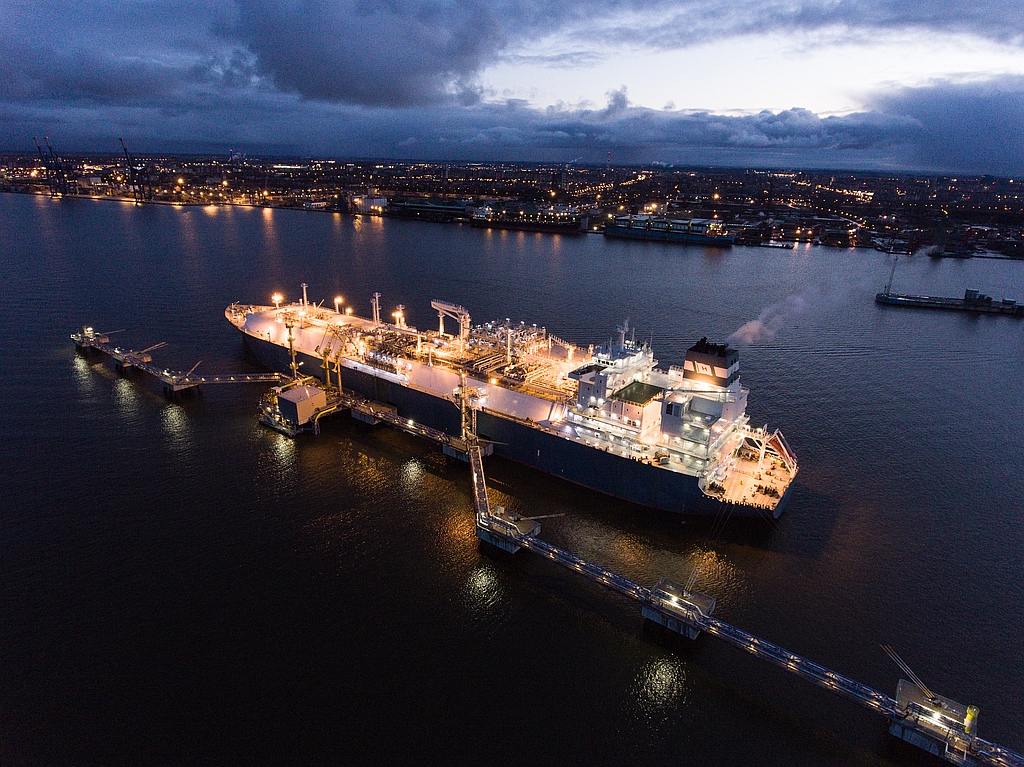
Wind, especially offshore wind, has tremendous potential to meet energy demand as an intermittent supply source that becomes more reliable when coupled with backup generation—and potentially storage, as grid-scale batteries become commercially viable and new technologies can store energy over longer periods of time. Denmark, Finland, Germany, Poland, Sweden, and the United Kingdom are all investing in offshore wind. Wind turbines are larger, more efficient, and will benefit from globally increasing wind speeds. These factors could cause the energy produced by a single turbine to grow by about 37 percent. Additionally, the intermittency of wind decreases when wind farms are distributed across different geographies and benefit from improved transmission infrastructure. For example, the United States’ Southwest Power Pool connects fourteen states, many of which have robust wind resources, and for that reason can ramp up wind power.
As a number of states and localities in the United States work to deploy solar and both onshore and offshore wind technology, there are opportunities to advance transatlantic partnerships and share best practices. Europe is leading on wind technology development and could assist the United States in its efforts. Progress has also been made in the United States. For instance, Maryland, Massachusetts, New Jersey, New York, and Rhode Island, among others, are vital drivers of offshore wind in the United States. There is an opportunity for EU-US collaboration on offshore wind deployment, and discussion about key challenges and lessons learned on transmission infrastructure and successful management of associated industries.
Renewables are also starting to play a greater role in oil and gas production. They could have overlapping infrastructure with offshore oil and gas development. The IEA estimates that about 40 percent of the full lifetime costs of an offshore wind project, including construction and maintenance, have significant synergies with the offshore oil and gas sector, which is one of the reasons oil and gas companies are investing in offshore wind projects. Many European oil and gas majors are either already investing in or have expressed interest in offshore wind. In addition, renewables could also be used to produce green hydrogen, which can be blended into natural gas pipelines.
Energy efficiency
Energy efficiency is one of the most cost-effective ways to reduce carbon emissions, and the EU is expected to make some of the largest improvements globally. Energy efficiency also contributes to energy security as it reduces reliance on fossil fuel imports. In 2012, the EU set a 20 percent energy savings target by 2020, which is roughly equivalent to turning off 400 power plants. Recently, the target was revised upwards to 32.5 percent by 2030 with a clause for another possible upwards revision by 2023. The current data from Eurostat (April 2019) show that primary energy consumption was 5.3 percent above the 2020 targets in 2017, whereas final energy consumption was 3.4 percent above those targets. There has been less focus on demand-side energy management in the transatlantic relationship. Energy conservation and the “Energy Efficiency First” principle is a shared priority in Europe and the United States that requires renewed focus. The EU and the United States could partner to enhance global cooperation in the field of energy efficiency and facilitate policies and technology standards that yield energy efficiency gains across different economic sectors.
Nuclear power
Nuclear power is one of the leading carbon-free energy sources in Europe, but its future is uncertain without strong government support and societal acceptance. One hundred and thirty nuclear reactors in fourteen EU member states generate around 30 percent of the electricity produced in the EU. There is a diversity of views among the EU member states on the phaseout of one of the largest carbon-free sources and its impacts on decarbonization. Public concern over the safety and price of nuclear energy is fueling the phaseout. An assessment of all externalities would allow for a fair comparison across energy supplies and technologies, including comprehensive environmental and security benefits. The IEA notes that “it is more expensive to build new wind and solar projects than to extend the lifespan of existing nuclear reactors, which require an investment of $500 million to $1 billion per GW of capacity.” The lack of government support for nuclear energy in Europe and globally will have implications for baseload capacity.
A lack of public and government support for nuclear energy capabilities as a strategic national asset is resulting in Russia and China filling the void and taking the lead in building new nuclear reactors. Russia has traditionally been present in European markets, offering a business model that combines nuclear technology and fuel, prompting concerns about nuclear fuel and technology supply diversity. The Euratom Supply Agency, which is responsible for diversified supply of nuclear fuels to EU users, recommends that EU facilities operating nuclear power plants maintain stocks of nuclear materials and cover their needs by entering into long-term contracts with a diverse range of suppliers. The European Commission has also raised concerns about member states not complying with the EU’s public procurement regulations.
Nuclear power plays a key role in energy security and provides carbon-free baseload power. The United States and the EU should continue cooperation on advanced nuclear technologies such as small modular reactors (SMRs). In October 2019, the EU and the United States held the first EU-US High-Level Industrial Forum on Small Modular Reactors co-organized by the European Commission and the US Department of Energy. It sought to examine the challenges and opportunities associated with deploying SMR technologies as part of future energy systems. The transatlantic community should continue to advance nuclear innovation to meet carbon emission goals without compromising reliability, resilience, and development, or risk lagging behind global players like Russia and China.
Hydrogen
Utilization of low-carbon gasses like hydrogen will be important for decarbonization. Hydrogen’s versatility positions the fuel for a dominant role in a decarbonized economy, but this promising technology will need large-scale financing and policies that are conducive to optimal utilization. Hydrogen can be produced with varying levels of carbon intensity. Green hydrogen is produced by electrolysis using renewable energy (solar and wind power) with no carbon emissions. Grey hydrogen is made from natural gas through the process of steam methane reforming. It is called blue hydrogen if emissions are captured and stored. Hydrogen can also be produced by reforming organic waste (biomass).
Hydrogen’s versatility and sourcing options position it to play many roles in the energy sector. The IEA’s World Energy Outlook 2019 emphasizes the utilization of hydrogen in the future energy mix, noting: “Hydrogen can be used in transport and heating, or converted into electricity, or transformed into hydrogen-based fuels, such as synthetic methane, ammonia or liquid fuels. It can also support the integration of high levels of renewable-based electricity by providing a long-term storage option and dispatchable low-carbon power generation.”
The EU is increasingly looking at hydrogen as a form of renewable energy storage over long periods of time, demonstrating its significance in the clean energy transition. On the margins of the G20 Energy Ministerial held in June 2019, the United States, the EU, and Japan established trilateral cooperation on hydrogen and fuel cell technologies.
The success of the EU’s deep decarbonization agenda will hinge on how well hydrogen is integrated into carbon-reducing solutions, including its role in the natural gas supply chain. Some of the immediate utilizations of hydrogen could include blending low-carbon hydrogen into the existing natural gas grid without any significant infrastructure upgrades. Snam, the Italian natural gas infrastructure company, is already working to inject more hydrogen into its gas pipeline network. Strong transatlantic financing commitments will be required to scale up this proven technology. Low-carbon gas standards and incentives, as well as cross-border regulations, would stimulate demand and offer certainty to investors.
GHG emissions reductions and the future of natural gas
A comprehensive approach to reducing natural gas emissions will ensure that natural gas retains its social acceptance and reliably continues satisfying European energy demand while complying with climate targets. Methane leakage reductions, CCS and carbon capture, utilization and storage (CCUS), and deployment of advanced technologies, such as hydrogen blended into the natural gas supply, will optimize natural gas utilization in the European energy mix.
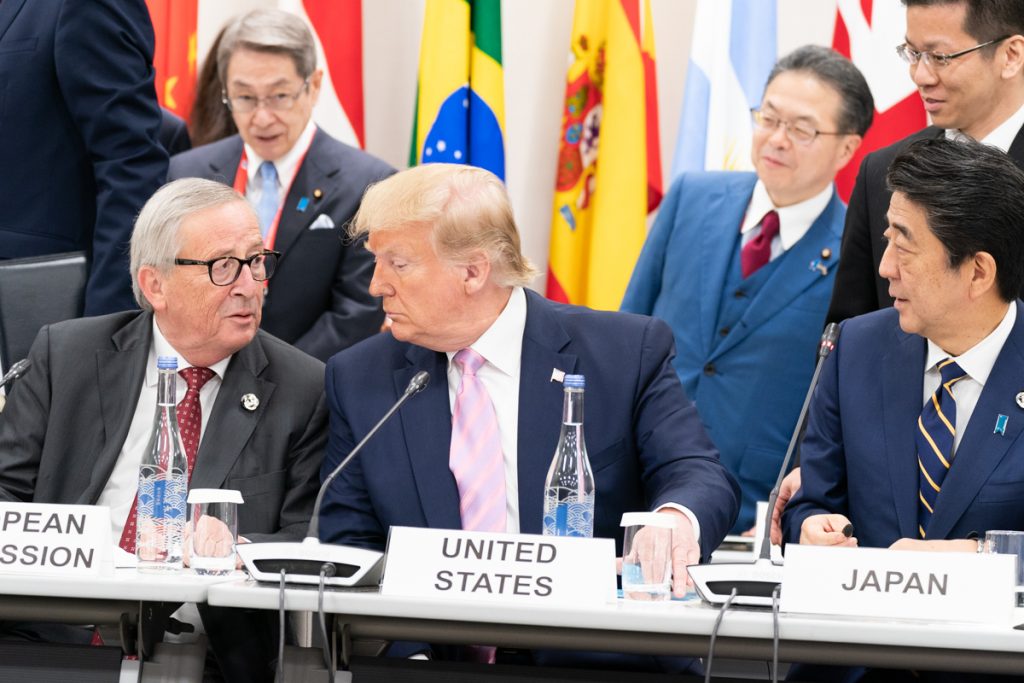
The IEA’s analysis shows that global methane emissions from the oil and gas sector could be reduced by nearly half at no net cost. Currently, there are no global or even transatlantic standards for methane emissions. Venting and flaring of methane are treated and incentivized differently in the United States, EU member states, and in Russia, the EU’s biggest gas supplier. Russia flares more natural gas than any other country, with 19.9 bcm flared in 2017. In the United States, the Trump administration is working on rolling back Obama-era methane regulations, which, if achieved, would widen the gap in the transatlantic strategy. The EU is currently analyzing the issue of methane emissions from the natural gas supply chain. It has launched a study on the issue, that will provide data for consideration in future legislation. The oil and gas industry has done significant work to reduce methane emissions, in many cases going above minimum standards, especially on tracking methane emissions though different segments of the gas value chain. However, significant opportunities still exist in quantification, reporting, and verification of emissions in a standard manner through the entire gas value chain. This is a prime area for transatlantic cooperation.
In addition to methane reductions, CCS will be essential for the sustainability of natural gas and hard-to-decarbonize industries as the 2050 neutrality target approaches. Like other not widely deployed technologies, the biggest hurdle for CCS is mitigating the financial risk of first-of-a-kind projects. The EU invested in several programs: the European Energy Programme for Recovery (EEPR) and the New Entrants’ Reserve 300 (NER300), which was funded by EU ETS revenue. The EEPR spent €424 million on six CCS projects. An audit of those initiatives concluded that “neither of the programs succeeded to deploy CCS in the EU.” EEPR did, however, contribute to the development of the offshore wind sector. Financial risks and unpredictable budgeting, permitting issues, strict eligibility requirements, and public opposition to underground CO2 storage were some of the main challenges for the project. Based on lessons learned, future projects will be funded by the European Innovation Fund, which is meant to be an improvement on previous efforts and will support both CCS and CCUS. Currently, Norway is the only country in Europe with two large-scale CCS plants.
The United States has made greater progress on carbon sequestration, namely on CCUS, including the use of CO2 in enhanced oil recovery. This occurred thanks to a supportive policy framework, including the Section 45Q federal tax credit for carbon dioxide sequestration, which was enacted in 2008 and recently reformed. In early 2019, California’s Low-Carbon Fuel Standard CCS Protocol took effect, providing additional incentives for CCS projects. The United States has ten out of ninteen large-scale CCS facilities globally, three of which produce hydrogen, according to the Global CCS Institute. The United States and the EU have a ripe opportunity to cooperate on this critical technology since US companies are operating with significant expertise and a supportive policy framework, and establish risk-leveraging funding mechanisms to encourage further innovation. In addition, CCS and CCUS development would surge if the transatlantic community coordinates on assigning an appropriate market-based price on carbon, which is an essential part of any policy framework to support climate change mitigation.
Failure to achieve scalable and price-competitive CCS and CCUS facilities presents a significant risk because it would hamper how essential fuels, such as natural gas, could be optimized in Europe and increases the risk for natural gas investors.
Sulphur hexafluoride
Sulphur hexafluoride (SF6) has not received as much attention as carbon, despite the fact that SF6 has the highest global warming potential of any known substance. SF6 is widely used in the electrical industry as an insulator. It is 23,500 times more powerful than CO2 and can persist in the atmosphere for 1,000 years or longer. As the EU continues its drive toward electrification, the question of SF6 emissions will have an impact. Effective regulatory mechanisms to curb SF6 must be developed to address those substantial emissions.
Key factors for clean energy and advanced technologies
The electricity grid of the future must be more resilient and responsive
Electrification does not automatically lead to greater reductions in carbon emissions. Nevertheless, carbon emissions reduction in the electricity sector is more feasible than direct decarbonization of sectors such as the industrial sector. In that sense, electrification can help to enable decarbonization. Electrification will contribute to Europe’s decarbonization, but only if the electricity is generated through clean energy sources and has a low-carbon footprint. Switching from coal to gas, low-carbon hydrogen integration, increasing the use of renewable energy, and implementing energy efficiency measures through smart grid technologies will reduce the electricity sector’s carbon emissions. A diversified electricity mix will result in a complex power system with greater variable load, growing digitalization and use of artificial intelligence, ramped-up demand response mechanisms, increased use of battery storage, and a greater number of residential and industrial customers connecting and proactively engaging with the grid.
Under the European Green Deal, “first assessments show we need to double the share of electricity in energy consumption by 2050,” according to Director General for Energy of the European Commission Ditte Juul-Jørgensen. The European electricity grid will have to be well-interconnected and resilient enough to handle growing penetration of intermittent resources and greater deployment of efficiency mechanisms. According to the IEA’s 2019 outlook, the EU’s electricity demand will grow from anywhere between 12–26 percent. According to the European Commission, the share of electricity produced by renewable energy sources is expected to grow from 25 percent to more than 50 percent by 2030.
In view of these market trends, the EU in 2019 adopted new electricity market designs to make the electricity system fit for the challenges of the energy transition and the growing share of intermittent renewable energy resources. The new electricity market design aims to facilitate more cross-border electricity trade among EU member states, and increase market competition and closer regional cooperation, while enabling more flexibility in the electricity grid. In order to increase the resilience of the EU electricity system, each EU member state is required to develop risk preparedness plans to be ready to respond to unexpected situations, working closely with neighboring member states.
The European infrastructure financing commitments also reflect the focus on power sector integration and decarbonization. The number of electricity and smart grid projects account for more than 70 percent of the European Commission’s Projects of Common Interest. The high number of electricity-related projects reinforces electrification’s role in the EU’s path to decarbonization. Electric grid investments will enable greater renewable energy loads and additional cross-border electricity interconnections. Electricity market design will have to continue adapting to those significant changes.
Since 2016, the EU and the United States have successfully partnered on wholesale power markets and transformation of the power sector as the EU has prepared its new electricity market design. Given the rapid electrification of various economic sectors, there is a lot of room to advance the transatlantic partnership on electrification pathways to 2050 and to build the clean and resilient grids of the future.
Transatlantic cooperation on cybersecurity threats will ensure secure electrification
Further electrification will result in an integrated EU electricity grid, as well as a greater number of services and connected users than ever before. The private sector has taken the lead on implementing security measures to prevent financial losses. Policy makers in the United States and the EU are slowly catching up to the private sector with legislation: the Network and Information Security Directive (NIS Directive), passed in 2016, is the first piece of EU-wide cybersecurity legislation to enhance cybersecurity across the EU; the European Cybersecurity Act of 2019 strengthens the European Union Agency for Cybersecurity (ENISA) and establishes an EU-wide cybersecurity certification framework for digital products, services, and processes in the EU; and the US Department of Commerce’s National Institute of Standards and Technology (NIST) provides cybersecurity advice to small and mid-sized businesses (SMBs) under new federal law in the United States. Currently, the United States and the EU have varying cybersecurity policies with differences in voluntary and mandatory measures. A cohesive transatlantic approach to cybersecurity policies will strengthen the regulatory safeguards. The United States and the EU should work together to recognize potential threats, particularly at critical links, and minimize their impact through rapid coordinated response and resiliency measures. In addition, a skilled workforce must be developed and trained to fill current talent gaps in the cybersecurity sector. A comparison of vulnerabilities in the US and EU electricity networks would allow for a more effective transatlantic response to cyber threats and attacks. While some steps were taken in that direction, there is an urgent need for a comprehensive transatlantic cybersecurity strategy in the energy sector that engages both the private and public sectors.
Energy consumers lack essential information about the energy sector
Natural gas, nuclear, wind, and even advanced technologies, such as CCS and CCUS, face societal opposition with different levels of pushback. Negative public perceptions of energy infrastructure could hinder the speed of decarbonization. Ironically, such pushback often comes from communities that are concerned about climate change. The United States and the EU have an opportunity to work together on transatlantic messaging and public education on the benefits and trade-offs of various energy infrastructure.
Threats posed by the supply chain risks of materials required for clean energy technologies
Deep decarbonization in the EU will rely on scalable investments in battery storage, solar, wind, electric vehicles, and advanced technologies, which require rare earth metals for production.
The risk of supply disruption is the greatest security threat to such clean energy technologies. Currently, China monopolizes the supply chain of materials essential for solar panels, electric vehicles, and other advanced technologies imperative for decarbonization. China’s dominance in the market is a growing security concern as quotas on overseas shipments of rare earths could jeopardize transatlantic energy security and be used as a lever of geopolitical influence or trade negotiation tool.
The EU, the United States, and Japan have identified rare earth minerals that are essential to each’s economy. The EU’s latest assessment calculated its dependence on China for its twenty-seven critical raw materials at 62 percent. (The next assessment is due in the spring of 2020.) The United States and the EU will have to diversify supply chains to mitigate security risks by expanding domestic processing and strengthening relationships with potential producers around the globe, such as in Africa or Australia. However, there are complex supply risks involved with mining in Africa. Strategic competition over rare earth minerals poses a threat not only to energy security but also to meeting climate targets. This threat should be addressed through transatlantic cooperation.
Conclusion
Deep decarbonization should be in lockstep with preserving market competitiveness and security of energy supply. Clean energy, natural gas, and advanced energy technologies will increase energy security while contributing to decarbonization, but only if financial, technical, societal, and geopolitical issues are addressed.
The final issue brief for this project will outline specific recommendations for the United States and the EU on how to advance transatlantic energy cooperation to further transition to a low-carbon economy.
About the authors
Subscribe to the Global Energy Center newsletter
Sign up to receive our weekly DirectCurrent newsletter to stay up to date on the program’s work.
Image: People take part in the “Fridays for Future” movement, part of the Global Climate Strike, in Berlin, Germany, on September 20, 2019. REUTERS/Fabrizio Bensch




